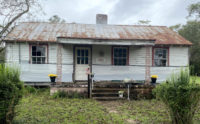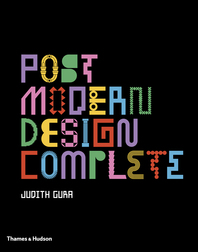Robert A. M. Stern, an architect whose chameleon-like sense of style has brought him his own share of criticism, wrote a defense of Edward Durell Stone’s most controversial work, Two Columbus Circle. It is a building best referred to by its address, since its days as the Huntington Hartford gallery are long past, its more recent days as a home for a New York City cultural affairs department are also ended, and it now sits unoccupied and surrounded in chain link and bums, in the shadow of the nearly complete monolithic AOL Time Warner Center. Plans were released in the last several months to turn the bones of the building–but not its distinctive windowless shell–into a new home for the Museum of Arts and Design. So no one seems quite sure what to call it.
No one has ever seemed quite sure what to call it stylistically. Stone began his professional life as an International Style Modernist, as Stern points out in his brief essay, which is published on the homepage of Preserve & Protect. Stone’s design with Philip Goodwin for the Museum of Modern Art’s main building on 53rd St. is being preserved as part of a huge renovation project. But that building is a landmark, and happens to be owned by MoMA, an early proponent and usually staunch defender of Modernism.
Stone’s other work, including Two Columbus Circle with its cartoonish Venetian "lollipops," in Ada Louise Huxtable’s description, and its blank façade framed in portholes–this work is less well defended, and even, often, attacked. It is hard to deny that Two Columbus Circle is a unique building. One would imagine that this is reason enough for its preservation, but the design for the new Museum of Arts and Design, by Brad Cloepfil of Allied Works Architecture gives the building a new façade of glass. It is probably a more functional building the way Cloepfil envisions it. It may even be a better building. But it is not Stone’s building.
Cloepfil's design goes before the City Planning Commission on June 18th, 2003, in a hearing open to the public.
Two Columbus Circle, however, is squarely in the spotlight. Every New Yorker knows it. Every visitor who has taken a cab from Lincoln Center (another work of Modern architecture in danger of being lost) back to his hotel in Times Square can recognize it. Every conventioneer who went to an auto show at the old New York Coliseum knows it. But what about Stone’s other work? Who sees the Conger Goodyear House in Old Westbury, a suburb on Long Island? Only the neighbors, who look over its once-rural grounds from the windows of their McMansions. Robert Ivy, the editor in chief of Architectural Record, tells the story of the Conger Goodyear House in a recent editorial:
On Long Island, a coalition of forces has apparently saved the Conger Goodyear House, a 1938 gem by Edward Durell Stone for Goodyear, the first president of the Museum of Modern Art. In that more fortunate case, the World Monuments Fund, which had listed the Old Westbury, Long Island, house among its 2002 list of the "100 Most Endangered Sites," pulled together a funding group including the Barnett Newman Foundation, which purchased the house; the Monument Fund’s own capital, which will finance necessary repair work; and the Society for the Preservation of Long Island Antiquities of Cold Spring Harbor, which will hold title to the property until a permanent buyer can be found. International, national, and local resources–all three–were required.
In the summer of 2002, the World Monuments Fund opened the Conger Goodyear House to RECORD. In this feature, spectacular and fascinating three-dimensional walk-throughs allow anyone interested in the house can take a look around. In addition, in excerpts from his own writings, Edward Durell Stone discusses how the house came to be, and how its design took shape






Post a comment to this article
Report Abusive Comment